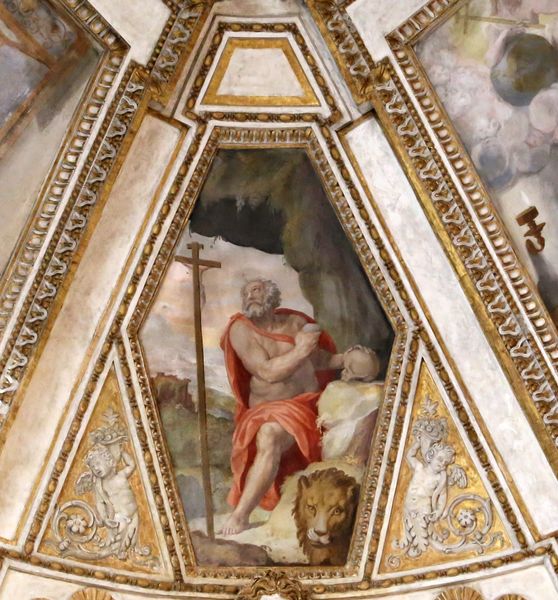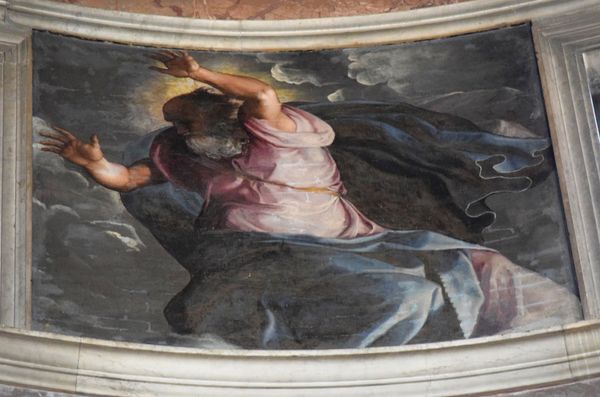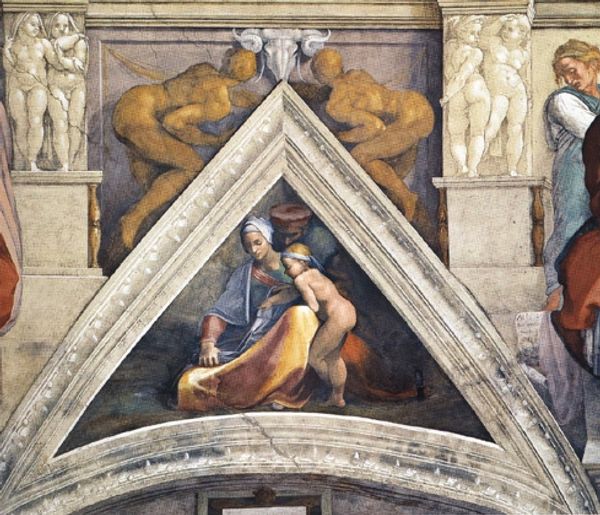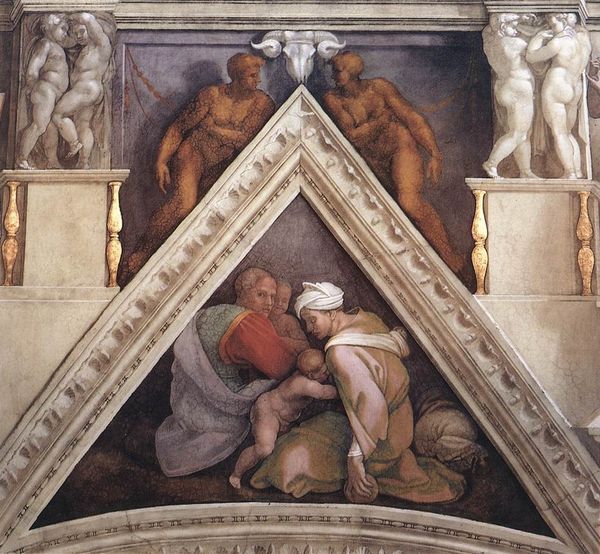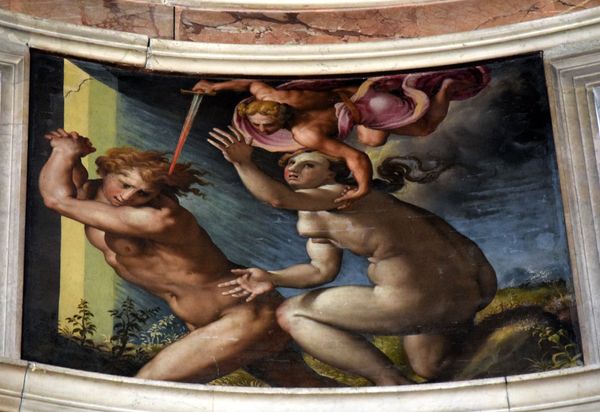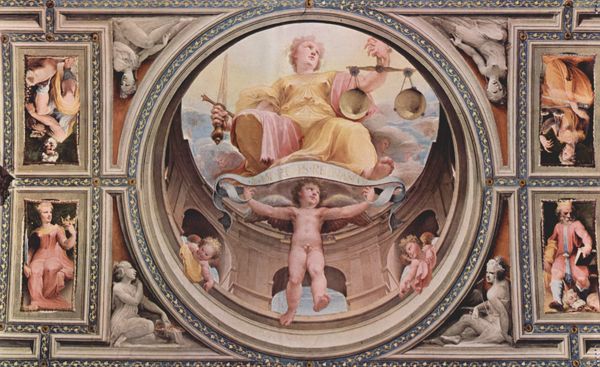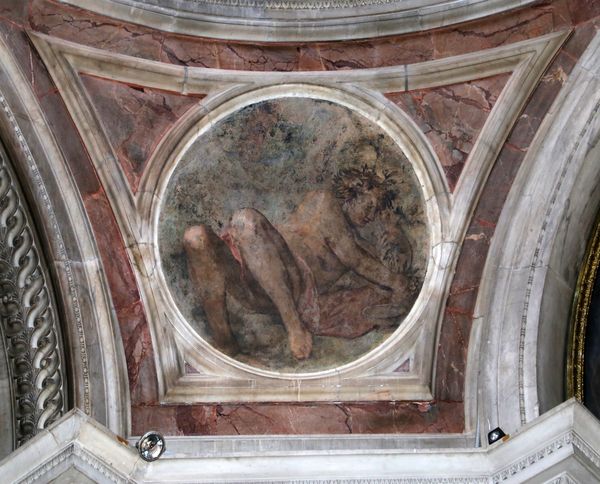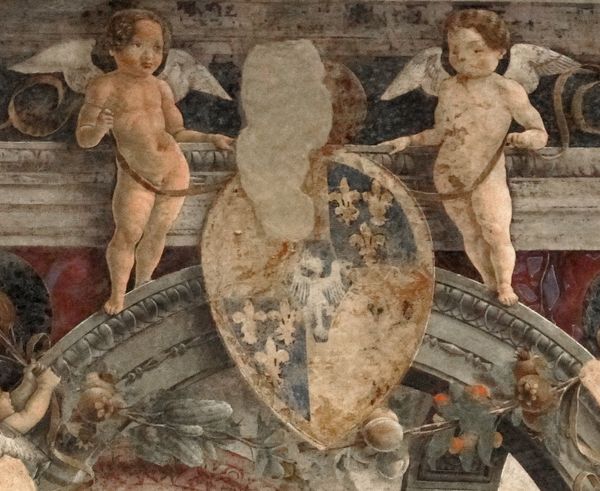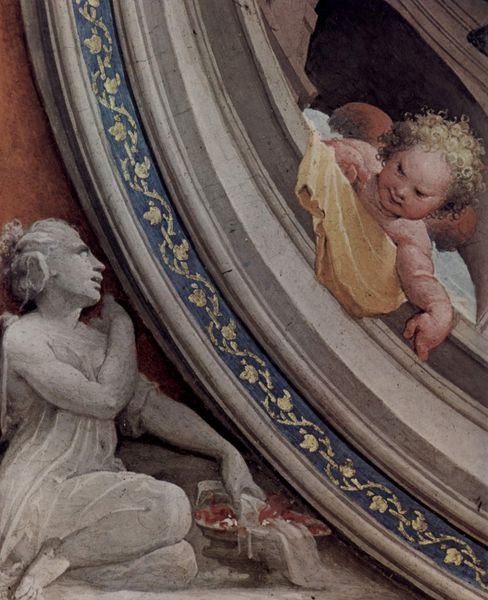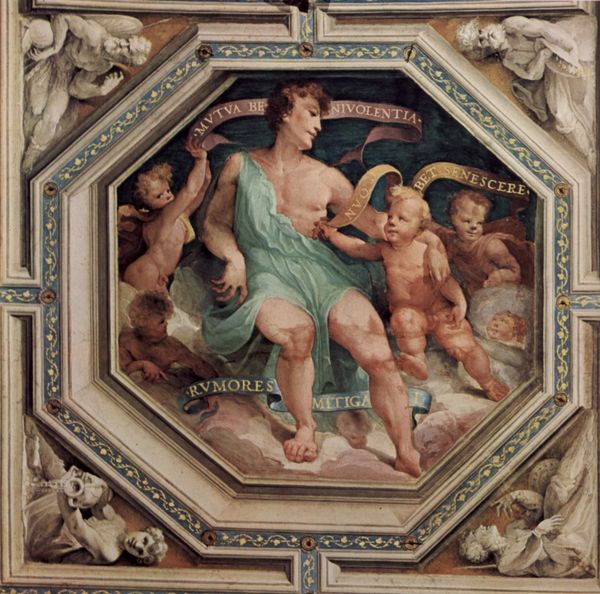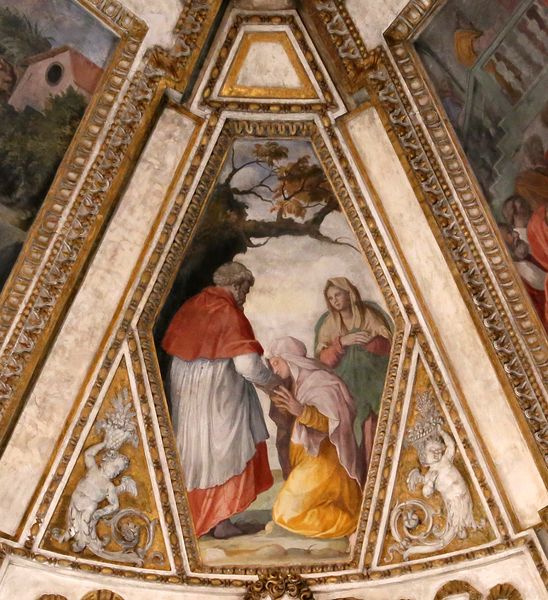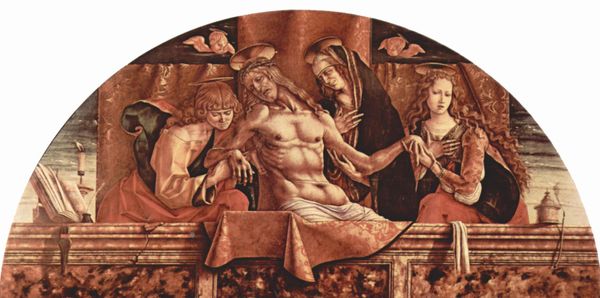
tempera, painting, fresco
#
portrait
#
narrative-art
#
tempera
#
painting
#
mannerism
#
figuration
#
fresco
#
chiaroscuro
#
history-painting
#
italian-renaissance
Copyright: Public domain
Curator: Let's turn our attention to "Winter," a tempera and fresco work from around 1550 attributed to Francesco Salviati, also known as Cecchino. What are your initial thoughts? Editor: Stark! The palette is immediately striking – that almost aggressively bare figure set against a sooty, indistinct backdrop. And the use of chiaroscuro intensifies that contrast; it's a rather unsettling composition. Curator: Unsettling, yes, and deliberate. Salviati, working firmly within the Mannerist tradition, manipulates form to evoke a sense of unease and perhaps even vulnerability. I'm drawn to consider the social conditions of artistic production. As a fresco within a larger decorative scheme, the labour invested to communicate the seasonal narratives of aristocratic society must be considered, since, even the tools employed contribute. Editor: The vulnerability you mention… the figure’s exaggerated musculature contradicts his apparent discomfort. The awkward pose and those imploring hands, coupled with his forlorn expression – it creates a complex emotional landscape. The formal disruption, the elongated limbs… it amplifies that feeling of disquiet. Curator: Precisely! Consider the fresco medium and its relation to its setting. Its making speaks to patronage and control of space – a marker of power displayed through this visualization of winter. There is tension to be found in that paradox. We must always also question whom did this labour benefit? Editor: True, and the lack of sharp detail, particularly in the background, forces the viewer to focus intensely on the figure itself. It’s as if Salviati is stripping away everything but the essential – the raw, exposed human form contending with adversity. One may even see a somewhat theatrical, expressive character and a dynamic contrast that commands our attention. Curator: In the act of its creation and commissioning, it also embodies the fraught nature of 16th-century Italian society and it being embedded with class and inequality. It prompts reflection of labor in a historical context. Editor: It does. It’s a study in contrasts, a testament to Salviati's technical skill, his willingness to push boundaries. It leaves us with an ambiguous story of suffering. Curator: Agreed; an artwork demanding inquiry beyond its aesthetics.
Comments
No comments
Be the first to comment and join the conversation on the ultimate creative platform.
